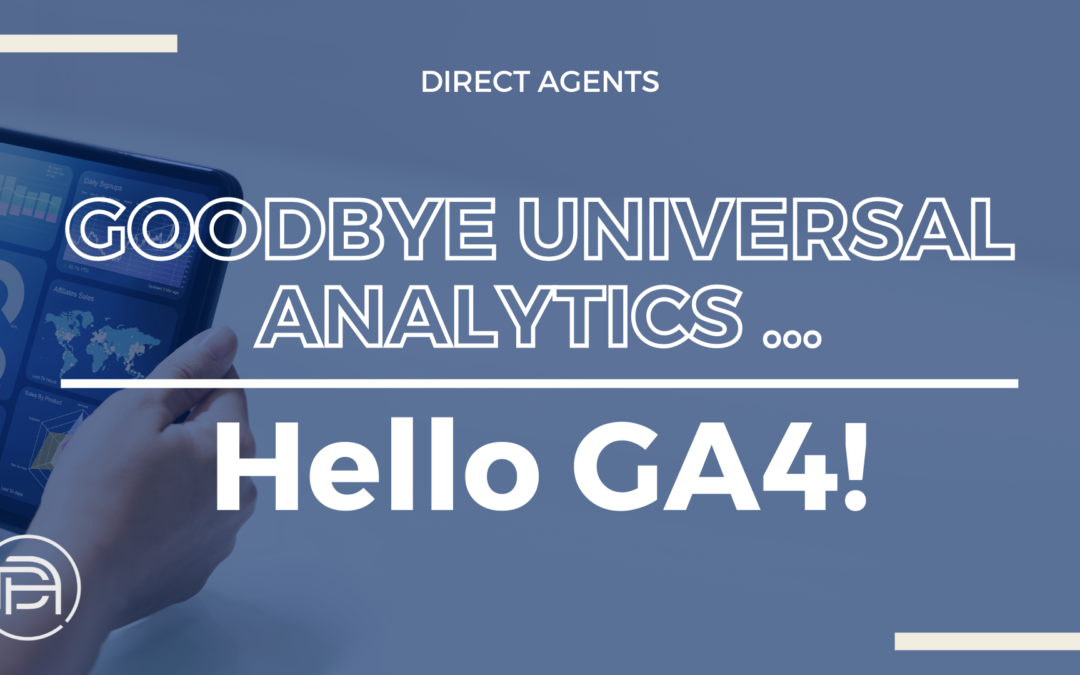Google announced that on July 1, 2023, standard UA (Universal Analytics) will no longer process data. For Google Analytics 360 users, the end date will be October 1, 2023. So what does this mean for advertisers? Essentially, those who have not yet made the leap to GA4, need to get moving as there is now a firm deadline for completion to avoid tracking interruptions. Google will not automatically transition the UA account to GA4.
What is GA4?
The aptly named GA4 (previously known as “Web + App”) is Google’s answer to navigating rapidly evolving data privacy concerns and cross-channel measurement. GA4 provides powerful data measurement and audience insight capabilities that position it well for the future of digital measurement and activation.
Re-envisioning Google Analytics (GA) from the ground up, GA4 addresses the privacy-centric, cookieless world. GA4 provides a flexible event-based data framework that powers built-in machine learning models that fill data gaps and provide users with greater visibility into multi-device and platform (web and app) performance.
New GA4 Features
Integrated Machine Learning
GA4 is built with machine learning as its core and provides brands with the enhanced capabilities needed to better address marketing measurement, insights, and targeting. GA4 provides 3 primary machine-learning features that help elevate the data sophistication of brands:
- Predictive Metrics: Automatically sifts through GA4’s structured event data to derive new metrics that highlight the statistical probability of an event occurring. Probabilities include Churn, Purchase, and Predicted Revenue.
- Predictive Audiences: Built upon at least one Predictive Metric with additional audience qualifying conditions, GA4 users can segment and hone in on the subset of customers of key interest. For example, users who are likely to make their first purchase in the next 7 days. This audience would not only be available within GA4 but also automatically synced with any linked Google Ads accounts.
- Cross-Device Measurement: Using a combination of Google Signals, User ID, and Device ID, GA4 can reconcile data to provide improved user counts and reporting accuracy. Using Google Signals within GA4 also allows for cross-device targeting across Google Properties!
Flexible Measurement
Universal Analytics (UA) was built on a framework of “hits” (think page views, events, and ecommerce) that were used for measurement.
With the emergence of GA4, a fundamental change is occurring where “hits” are being replaced with Events. However, it is important to note that GA4’s events are different from UA’s as they do not contain the 3 fields of Category, Action, and Label. Instead, each Event is assigned a name and can have up to 25 event parameters and user properties associated with it.
The granularity of measurement and insights that can now be derived in GA4 is far beyond what UA had to offer.
Migrating From UA → GA4
While July 1st, 2023 is the date UA will stop collecting data and brands must switch over to GA4, data will only start to populate from the date it is implemented. Therefore it is advantageous for brands to address this migration as soon as possible so that a historical YoY data set is available at the time UA is retired.
Beyond the YoY data comparisons, by prioritizing your GA4 migration you will be able to afford yourself time for:
- Transitioning into GA4’s new data sets, capabilities, and reporting while still being able to access your ever-familiar UA data. Unlike when UA was released – which was very similar to Classic Analytics – GA4 is very different and will require time for users to become comfortable with it.
- Exporting historical data from GA UA. Google has mentioned that they will continue to store historical UA data for some time after July 1, 2023, but they have not yet stated for how long. For this reason, it will be important to extract and store your UA data for future reference and use.
- Developing new data pipelines and ecosystems to support performance reports that had previously relied on UA as a data source.
How Direct Agents Can Help
The Direct Agents team has a wide range of data measurement and migration planning expertise relating specifically to Google Analytics UA, GA4, and Google Tag Manager (GTM), and we have been guiding brands through the GA4 migration process since 2020.
If you need assistance migrating your Google Analytics properties and want more information on our process, please reach out to [email protected].



